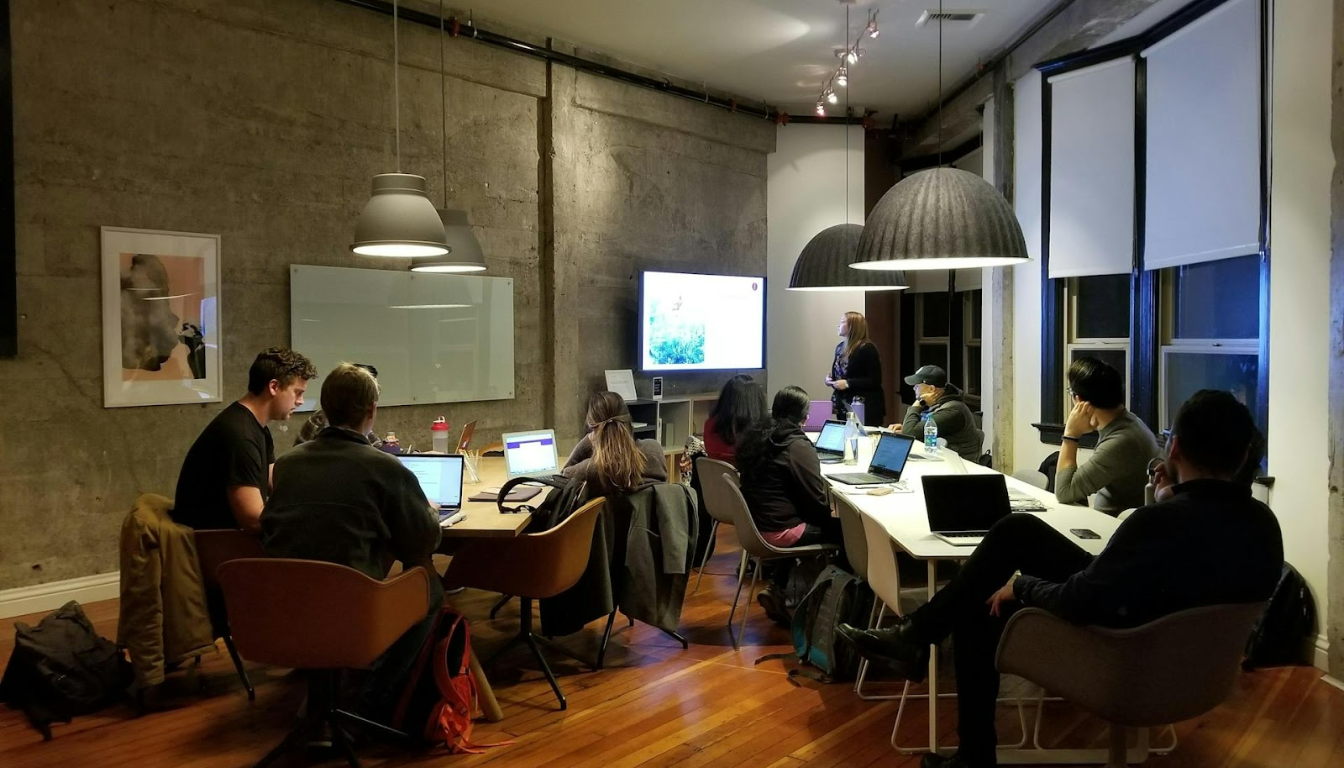Master the Meeting Kick Off: Pro Tips for Success

A strong meeting kick off is essential for project success. It aligns the team, clarifies objectives, and sets clear expectations. This guide will show you how to effectively kick off your meetings to ensure your project starts on the right foot.
Key Takeaways
- A well-organized kickoff meeting is essential to set clear expectations, align goals, and foster team collaboration, ultimately preventing misunderstandings that can derail a project.
- There are three main types of kickoff meetings—internal, external, and agile—each requiring different levels of preparation and focus to effectively engage stakeholders and align project objectives.
- Effective planning, including a detailed agenda and clear communication strategies, is crucial for a successful kickoff meeting, and post-meeting follow-ups ensure accountability and sustained momentum.
The Importance of a Meeting Kick Off

The project kickoff meeting plays a crucial role in setting the stage for success. It communicates key information, answers team questions, and ensures alignment from the outset. This clarity in expectations prevents misunderstandings that could derail the project later.
A successful kickoff meeting lays the groundwork for collaboration by establishing clear expectations and shared goals during the first meeting. This initial alignment promotes productivity, clarifies roles and deadlines, and boosts team morale.
Without a proper kickoff meeting, projects often face disorganization and miscommunication, which can lead to failure. A well-executed kickoff sets the tone for teamwork and unity, paving the way for a smooth and successful project kickoff meeting journey. Additionally, project kickoffs are essential for aligning goals and expectations.
Types of Kickoff Meetings

Not all kickoff meetings are created equal. Depending on the nature of the project and the stakeholders involved, kickoff meetings can vary significantly in their format and focus. There are three main types of project kickoff meetings: internal, external, and agile.
Each type has its unique requirements and goals. Internal meetings focus on team alignment and clarifying questions, often requiring less formal preparation. External client kickoff meetings emphasize polished presentations and alignment on goals, deliverables, and collaboration expectations.
Agile project kickoff meetings are designed for new projects or significant milestones, concentrating on resources and ongoing communication. Understanding these types enables you to tailor your approach for the most effective kickoff.
Internal Kickoff Meetings
Internal kickoff meetings focus on aligning the project team and facilitating open discussions. These meetings generally require less formal preparation compared to client-facing kickoffs. The goal is to ensure everyone understands the project details and their roles.
Include all core project team members such as the project manager, technical or creative leads, and key contributors, while excluding unnecessary participants to keep discussions focused and efficient. This ensures a cohesive team member ready to move forward with a clear understanding of the project.
External Client Kickoff Meetings
External client kickoff meetings focus on aligning project goals and deliverables with the clients. These meetings demand a higher level of polish and professionalism. Including external partners ensures agreement on expectations, timelines, and communication protocols, presenting a polished image and demonstrating effective collaboration skills.
Introduce the new project team, agree on collaboration methods, and meet to discuss project stages. Highlight key specialties such as creativity, marketing, and public outreach.
Understanding the client’s flexibility regarding project changes, including budget allowances, is also important. Sharing information with the team ahead of time ensures a professional and unified presentation.
Agile Project Kickoff Meetings
Agile project kickoff meetings are held at the start of new projects or significant milestones. These meetings emphasize ongoing communication and resource allocation, ensuring the team is prepared to iterate quickly and adapt to changes throughout the project.
In agile environments, the kickoff meeting sets the stage for continuous collaboration and frequent check-ins. This approach maintains a shared understanding of the project’s evolving scope and priorities, ultimately contributing to success.
Steps to Plan an Effective Meeting Kick Off

Planning an effective kickoff meeting requires careful thought and preparation. The project manager should:
- Arrange all logistical aspects, such as reserving a meeting room or virtual space and checking recording capabilities
- Consider time zone differences
- Prepare a well-structured agenda incorporating the 5 W’s: who, what, where, when, and why
Team members should arrive prepared, especially for external kickoff meetings, to address potential misunderstandings. Maintaining a productive environment is essential to ensure the meeting achieves its objectives, as team members expect the meeting to be effective and expected to contribute positively.
Define Clear Objectives and Purpose
Clearly defining the project’s purpose and objectives is crucial for an effective kickoff meeting. Aligning the team on goals and priorities helps everyone understand how their work contributes to broader business objectives. Project goals should adhere to the SMART criteria:
- Specific
- Measurable
- Achievable
- Relevant
- Time-bound
Providing introductory background information about the project’s purpose, goals, and tasks at least a day in advance ensures all participants are prepared. This preparation sets expectations and fosters a shared understanding of the project’s scope and objectives.
Create and Share a Detailed Agenda
A detailed meeting agenda ensures everyone is on the same page and has the necessary materials for review. Using flow points and assigning time blocks can guide the creation of an effective agenda. Include pre-meeting materials such as:
- The project charter
- High-level timeline
- Budget overview
- Known risks
Sending out questions ahead of the meeting promotes productive discussions and allows participants to prepare their responses to invite questions and answer questions. This ensures the meeting stays focused and covers all critical topics.
Identify and Invite Key Participants
Selecting the right participants for the kickoff meeting is crucial for productive discussions and effective collaboration. Finalizing the invite list ensures all relevant stakeholders, executive sponsors, and attendees are included, bringing most important parts and balanced authority to the meeting.
A well-thought-out invite list can enhance discussions and lead to better decision-making. Including all key stakeholders aligns the team and sets the stage for stakeholder project success.
Structuring Your Meeting Kick Off

A well-structured kickoff meeting facilitates conversation and ensures critical topics are addressed, keeping the team focused and on schedule. The format can range from informal discussions to formal presentations, depending on the project’s complexity and the participants involved. Typically, a kickoff meeting for a moderately complex project lasts 60 to 90 minutes.
Starting and ending on time, adhering to agenda time blocks, and being prepared to address questions are key to maintaining focus and efficiency during scheduling the meeting to save time.
Start with Introductions
Starting with introductions allows team members to share their roles and contributions, fostering a sense of collaboration from the outset within the group. Brief icebreaker games can boost morale and help participants get to know each other.
When team members may not know each other, incorporating introductions or icebreaker questions at the beginning sets a positive tone and encourages interaction.
Present the Project Scope and Deliverables
Presenting the project scope and deliverables is a critical part of the kickoff meeting. The project scope should include a thorough description of the deliverables and the work required to achieve them. This detailed description sets clear expectations and ensures alignment among team members.
Establishing project roles and responsibilities during the kickoff ensures everyone knows their tasks and how they contribute to overall project success.
Review the Project Timeline and Milestones
Reviewing the project timeline and key milestones helps the team understand the bigger picture and the path to success. Visual aids like roadmap charts are effective for illustrating timelines and making complex information more digestible.
These tools present key milestones and dependencies clearly, fostering collaboration and alignment among team members. This shared understanding is crucial for maintaining project progress and achieving success.
Communication and Collaboration During the Kickoff

Effective communication and collaboration during the kickoff set the stage for ongoing project success. Key elements include:
- Aligning on communication methods and meeting frequency to ensure everyone knows how and when to interact.
- Discussing communication methods and incorporating feedback mechanisms during the kickoff to set expectations for team interactions.
- Promoting open communication throughout the project.
Set Up a Collaboration Workspace
Setting up a collaboration workspace is essential for effective communication and task management. Digital tools like Google Docs or Dropbox can be used to share essential information. Meeting agendas can be shared in a canvas, and pre-read materials can be pinned to a dedicated channel.
Employing a project management tool helps track tasks and improve overall team collaboration. A central digital workspace ensures all team members and stakeholders have access to vital project information through a work management system.
Establish a Communication Plan
A communication plan specifies the schedule for regular meetings, the format and frequency of status reports, and the primary communication channels. Defining the frequency of updates keeps all stakeholders aligned and informed while communicating effectively.
Creating specific channels for urgent issues allows the team to address critical matters promptly. A well-defined communication plan ensures everyone knows how and when to communicate, enhancing project coordination.
Post-Meeting Follow-Up
Post-meeting follow-up is crucial for maintaining momentum and ensuring the energy generated during the kickoff translates into productive work. Assigning next steps and action items at the end of the meeting helps. Confirming when the first check-in on assigned action items will occur keeps the team accountable and aligned.
A central source of truth and collaboration is necessary to keep the entire team aligned and ensure everyone has access to the necessary shared document.
Document Decisions and Action Items
Real-time documentation on a shared screen or collaborative document is crucial for recording decisions during kickoff meetings. Assigning a scribe for taking notes ensures someone other than the meeting host is responsible for documentation.
Action items should clearly outline who is responsible and when they are due. After the kickoff meeting, capture and assign Action Item to relevant team members. Sharing notes and recordings in a shared project keeps everyone aligned.
Send a Follow-Up Email
Sending a follow-up email within a day of the kickoff meeting is essential for maintaining relevance and urgency. This email should reinforce the discussions that took place, ensuring everyone is on the same page. A well-timed follow-up email enhances team alignment and keeps the momentum going for success.
The follow-up email should summarize key points from the meeting, provide encouragement to the team, and outline the next steps. This reinforces the project’s objectives and ensures all team members are clear on their roles and responsibilities moving forward.
Summary
Mastering the meeting kickoff is essential for setting the tone for project success. From understanding the importance of kickoff meetings and the various types, to planning, structuring, and ensuring effective communication and follow-up, each step plays a crucial role in ensuring that the team is aligned and motivated. For teams looking to enhance this experience, especially in a remote or hybrid setting, services like Offsite can be invaluable. Offsite specializes in planning and executing company retreats and offsites, helping teams connect on a deeper level and fostering a collaborative environment. By following these pro tips, you can create a solid foundation for your project, fostering collaboration and driving momentum towards shared goals. Remember, a strong kickoff meeting sets the stage for alignment, motivation, and success.
FAQs
- What is the primary purpose of a project kickoff meeting?
The primary purpose of a project kickoff meeting is to align the project team, establish clear expectations, and develop a collaborative roadmap for successful project execution. This initial gathering sets the foundation for effective communication and teamwork throughout the project.
- What are the main types of project kickoff meetings?
The main types of project kickoff meetings are internal, external, and agile, each serving distinct purposes tailored to the project's needs. Understanding these types helps ensure effective communication and alignment from the start.
- How should I prepare for an external client kickoff meeting?
To prepare for an external client kickoff meeting effectively, ensure you convey a polished image and foster collaboration by sharing relevant information with your team in advance. This will help you present a unified front and demonstrate your understanding of the client's needs and project flexibility.
- Why is it important to send a follow-up email after the kickoff meeting?
Sending a follow-up email after the kickoff meeting is crucial as it reinforces the discussed points and ensures alignment among all participants. This practice helps maintain clarity and fosters effective communication moving forward.
You may also like
Unique spaces for your next offsite
Find distinctive venues for your upcoming corporate retreat.
Stay Updated with Our Insights
Get exclusive content and valuable updates directly to you.







